Scientific revolution and materialist philosophy: part two
In the second part of his analysis of science and philosophy, Ben Curry scrutinises the development of science from the Middle Ages through to the modern era, from its relegation as the “handmaiden of theology” under feudalism to the bourgeois scientific revolution ushered in by the likes of Copernicus, Galileo and Newton. Ben explains that science is always rooted in class society, and the lack of a dialectical materialist perspective has led some modern scientists back to the idealism and mysticism that the bourgeoisie railed against in its revolutionary phase.
The handmaiden of theology
Eventually the dependence of ancient thought on the slave system made itself felt as, at a certain stage, slavery became a fetter on society’s development. Only a revolution in the social and economic conditions could remove the limitations that hemmed in society’s development. In the absence of a revolutionary class able to take society forward, Ancient Greco-Roman civilisation was doomed to collapse.
Between the collapse of Ancient civilisation and the Renaissance what stands out is a period of darkness and ignorance lasting centuries that seemed to envelop Europe. Whilst knowledge of Ancient philosophy was preserved in Islamic al-Andalus and the Arab world, across Christendom a period of darkness reigned for an entire age. How can this be explained? Certainly it was not that ancient philosophy was forgotten; a certain injection of Aristotle and Plato ran through the entire dogma of the Catholic Church. Meanwhile literate clergymen were sufficiently versed in the materialist trends in Greek philosophy to invent reams of slanders against its best representatives.
Why then did the Middle Ages give so little to science and philosophy? A proponent of the ‘Great Men’ view of history would perhaps contend that there was simply a dearth of geniuses between the world of the Ancient Greeks and that of the Renaissance. This was far from the case. In fact the Middle Ages furnished some outstanding geniuses.
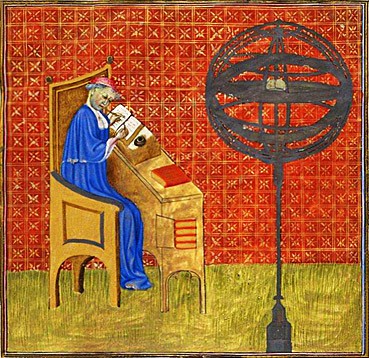 Nicole d’Oresme / Image: public domainTo provide one example: in the 14th Century a French clergyman and polymath by the name of Nicole d’Oresme, whilst studying the physics of Aristotle, came to conclusions with regard to mass and inertia that were tantalisingly similar to the conclusions drawn by Isaac Newton some 300 years later. And yet we do not speak of d’Oresme’s Laws of Motion; we speak of Newton’s Laws. Why is this?
Nicole d’Oresme / Image: public domainTo provide one example: in the 14th Century a French clergyman and polymath by the name of Nicole d’Oresme, whilst studying the physics of Aristotle, came to conclusions with regard to mass and inertia that were tantalisingly similar to the conclusions drawn by Isaac Newton some 300 years later. And yet we do not speak of d’Oresme’s Laws of Motion; we speak of Newton’s Laws. Why is this?
The explanation is to be sought in the 300 years of historical development that separates the two men. It was not a lack of geniuses that held back the development of science, but the social and economic organisation of society. France of d’Oresme’s day was founded upon feudal property relations. Indeed d’Oresme himself, as a clergyman, belonged to a privileged feudal estate, which claimed for itself the exclusive right to think for society. In all epochs the ruling ideas are the ideas of the ruling class. This meant the feudal aristocracy and the Catholic Church, whose spiritual dictatorship provided the ideological justification of the status quo.
To quote St. Thomas Aquinas, philosophy – and therefore also natural philosophy – merely served as the “handmaiden of theology”. In the cloisters of the medieval monastery it was the physics of Aristotle that reigned supreme. According to the great thinker of Ancient Greece, everything tended towards the centre of the Earth and all motion that diverts from the vertical descent was deemed unnatural and requiring a constant external impulse. For the church this impulse was God, who was the constant spring of life and motion. To place a question-mark over Aristotle’s physics was to place a question-mark over the immanence of God himself.
As such, d’Oresme’s writings, whilst injecting material for later developments, could not in and of themselves overturn the old dogma. For the most part they served as little more than curious commentaries on the works of Aristotle.
Of course, the Middle Ages were not totally devoid of original ideas, scientific investigation and development, etc. However, those involved in such work would firstly come up against the limitations of a fractured, feudal structure of society, which hindered the spreading of thought, often beyond immediate boundaries. More seriously, the Church and its secular supporters stymied such processes with all the brutal power they could muster. Lines of thought that challenged the status quo were suppressed, books burnt and sometimes their authors too. Even religious thought, if it fell foul of the authorities, could send you to the stake. The only areas where science openly prospered were in the fields of architecture, ship building and, of course, warfare – areas where secular demands predominated. Science and philosophy were very dangerous professions, at least until the start of Renaissance and, in certain parts of Europe, for several centuries thereafter.
Copernicus and the Scientific Revolution
Before a revolution in physics was possible a revolution had to take place in society. Along with the productive forces, constrained by the old superstructure, science itself had to be liberated from its position as a mere “handmaiden”. Such a task could not take place in the realm of ideas alone but would have to begin as a physical struggle in society, that would spill over into science. And indeed the struggle to liberate science did take on an extremely brutal and bloody form and provided its crop of martyrs under the persecutions of both the Catholic and Protestant churches in the period of the bourgeois revolutions in Europe.
One of the first revolutionaries to take up science as a weapon with which a shattering blow would be dealt against the spiritual and intellectual domination of the Christian Church was the astronomer Nicolaus Copernicus. Feudal Europe had inherited its cosmology from the Roman mathematician and astronomer, Ptolemy. This view, which placed the earth at the centre of Creation, was not only ideologically useful for the feudal ruling classes – it also proved to be an extremely powerful explanatory tool when considering the motions of the heavens.
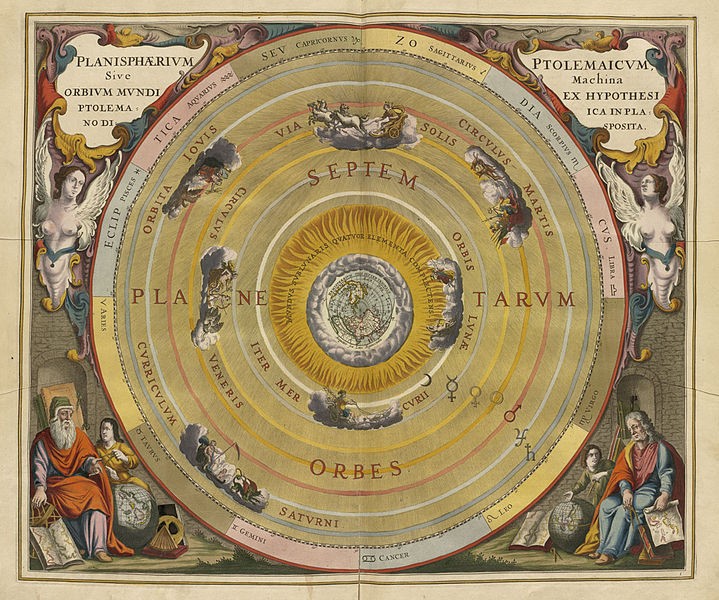 According to the Ptolemaic conception of the universe, Earth is at the centre of creation, surrounded by concentric circles leading up to the heavens / Image: public domain
According to the Ptolemaic conception of the universe, Earth is at the centre of creation, surrounded by concentric circles leading up to the heavens / Image: public domain
According to this view, everything down here, on Earth – which is at the centre of ‘God’s Creation’ – is mortal, imperfect and tends to decay. Meanwhile, up above us are the immortal, perfect heavens – the literal dwelling place of God – that rotate around the earth. These heavens were made up of concentric spheres. First came the sphere of the Moon, then the Sun and the planets, and finally – rotating at the most absurd speed of all – the sphere of the stars.
Over each of these spheres presided a hierarchy of angels, arch-angels and God himself, in the highest heaven driving the dramatic, daily revolutions of the stars. This hierarchy clearly reflected, and was supposed to provide divine justification for, the earthly hierarchy of the king, his lords and peasants down here on earth. Having discarded everything to do with ancient atomism, there was no question of the heavens being made of atoms and void. Rather they were made of a perfect, interlocking crystalline substance – of course because God is perfect and the heavens are where God lives.
From the modern point of view, this worldview seems to be a transparent invention that served the purposes of a feudal ruling class. In fact it was far more than that: it was the most successful explanation for the motions of the universe as feudal men and women saw it. After all: the heavenly bodies do indeed seem to carry on a circular motion around the Earth. Furthermore any cosmology in which the Earth is not static seems to contradict ‘common sense’: isn’t the Earth beneath our feet entirely still? Wouldn’t the seas and atmosphere be ripped off the Earth if it moved?
A science in crisis
However, the progress of astronomy and the quantitative accumulation of data regarding the motions of the heavens began to undermine the old Ptolemaic model. The planets (“wandering stars”) in particular could not be made to fit into the simple circular motion around the earth that was expected of them – rather closer examination revealed what appeared to be an extremely complex spirograph-like motion.
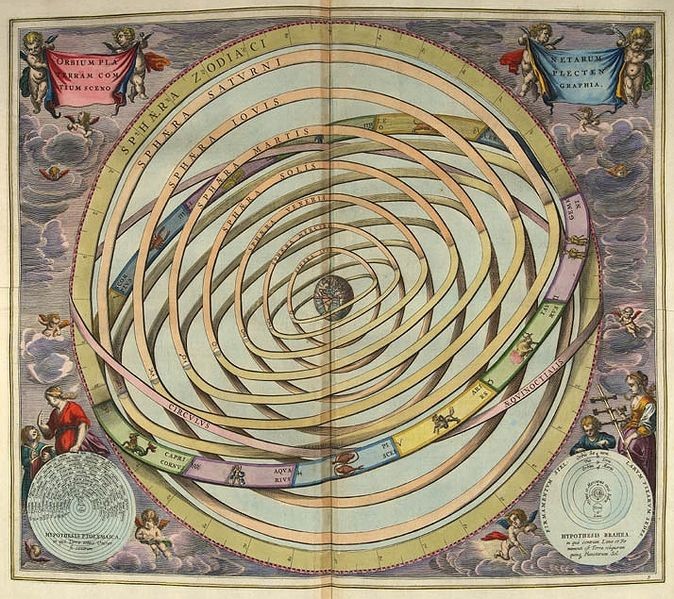 Ingenious mathematical devices – so called “epicycles” and “epicentrics” – were used to explain discrepancies in the movement of the planets under the Ptolemaic model / Image: public domain
Ingenious mathematical devices – so called “epicycles” and “epicentrics” – were used to explain discrepancies in the movement of the planets under the Ptolemaic model / Image: public domain
However, the old theory did not simply collapse under the weight of its own contradictions. It had to be overthrown. Until a new theory arrived on the scene that could successfully challenge the old one, all kinds of mathematical devices were invented to keep the earth at its central location in the universe. These ingenious mathematical devices – so-called “epicycles” and “epicentrics” – were infinitely flexible. By adding an epicycle here or there and tweaking these arbitrary variables, the observations could be shoehorned into a closer and closer fit to our observations. Thus the Ptolemaic model could be saved from any new observation.
Anyone familiar with the current state of cosmology will be struck by the similarities that it shares with the Ptolemaic cosmology in its final days. Today too, all manner of arbitrary variables – dark matter, dark energy, inflation, cosmological constants, etc. – have been latched on to the Big Bang theory, without the slightest shred of observational evidence in their support. These variables are infinitely tuneable. It’s therefore ironic yet unsurprising that a major symptom of our current cosmology’s crisis is the fact that the theories prove too accurate as against what one might expect in the normal development of science.
Revolutionary science
In his excellent book, The Copernican Revolution, Thomas Kuhn shows how this earliest of scientific revolutions in the dawning bourgeois epoch is an exemplary case of the manner in which scientific thought develops in general. The Ptolemaic view provided what Kuhn described as a “paradigm” in which “normal science” could be conducted: the accumulation of new astronomical data; observation at greater levels of accuracy and the extension of the paradigm to new areas. However, this quantitative accumulation eventually comes into conflict with the old paradigm and causes the old theory to go into crisis. Only a different kind of science, “revolutionary science”, can tear down much of the old theory and erect in its place a new theoretical framework.
In 1543, Copernicus put forward an entirely new cosmology in the work De Revolutionibus (“On The Revolutions”), to account for the growing body of contradictory observations. His new cosmology literally took the Ptolemaic view and ‘turned it on its head’. Instead of the sun orbiting the Earth, what if the Earth – along with the planets – are made to revolve around the sun? At a stroke the apparently complex motions of the planets across the sky were explained.
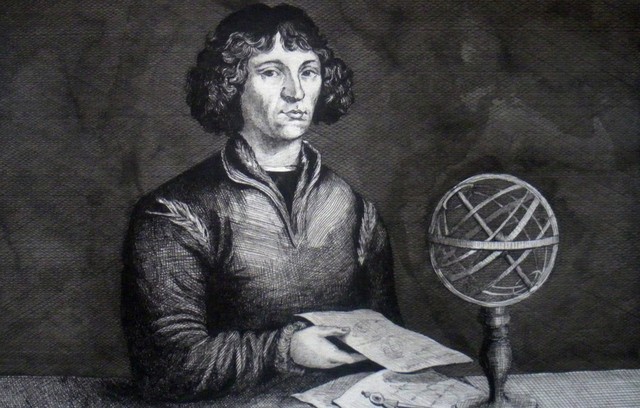 Copernicus put forward an entirely new cosmology in which the Earth and planets revolve around the sun / Image: public domain
Copernicus put forward an entirely new cosmology in which the Earth and planets revolve around the sun / Image: public domain
The dialectical development of science through the transformation of quantity into quality describes the logic not only of the Copernican Revolution but all genuine revolutions in science. For their explanatory power, Kuhn’s ideas have achieved a widespread acceptance in academia, to the point where his expressions (“paradigm shift”, “revolutionary science” etc.) have become tired and overused clichés. In reality what Kuhn discovered (or more accurately, rediscovered) is the operation of dialectics in the realm of scientific investigation.
Indeed, the following paragraph from Trotsky’s philosophical notebook shows how similar Kuhn’s ideas were to those of a consciously dialectical view of science:
“Historically humanity forms its ‘conceptions’ – the basic elements of its thinking – on the foundation of experience, which is always incomplete, partial, one-sided. It includes in ‘the concept’ those features of a living, forever-changing process, which are important and significant for it at a given moment. Its future experience at first is enriched [quantitatively] and then outgrows the closed concept, that is, in practice negates it, by virtue of this necessitating a theoretical negation. But the negation does not signify a turning back to tabula rasa. Reason already possesses: a) the concept and b) the recognition of its unsoundness. This recognition is tantamount to the necessity to construct a new concept, and then it is inevitably revealed that the negation was not absolute, that it affected only certain features of the first concept…” [addition mine].
Nevertheless, Kuhn was not a conscious dialectician and his discoveries necessarily had their limitations. The most fundamental limitation in Kuhn’s thought was his consideration of the development of science apart from and independently of general social, economic and political development.
If we return to the revolution carried out by Copernicus, we can see how the old cosmology actually went into crisis centuries before Copernicus was born. It was not new observations or discoveries that finally tipped the scales. Indeed the discovery of the telescope and its application to astronomy by Galileo didn’t occur until many years after Copernicus’ death. Nor did the crisis itself automatically bring forth “revolutionary science”.
Rather it was the changing social and economic conditions, and the rise of a revolutionary class – the new class of thinking bourgeois among the burghers, artisans and merchants – that gave an impetus to the revolution in science. The rise of this class, with its revolutionary opposition to feudalism and its roots in a mode of production that must constantly revolutionise technique and science, was the single most important event in the history of science until the rise of the revolutionary proletariat; ushering in as it did the scientific revolution.
Newton and mechanical materialism
With Copernicus a scientific revolution was begun, which through Tycho Brahe, Kepler, Galileo and others, ended with a more or less complete worldview in the form of Newton’s “general law of gravitation”. For the first time, in his Principia, Newton unified the physics of the earth and the heavens.
Down here on earth it is impossible to avoid dialectics, which confronts us at every turn. Everything here has its history, is mortal and is in a constant state of flux. Meanwhile the heavens seem to be very different. They are immortal and their motions repeat eternally, without past or future.
The similarity between this regular, repeating and predictable motion of the heavens and the motions of a mechanical piece of clockwork have been known for millennia. One Ancient Greek engineer even produced a most remarkable clockwork computer to calculate the heavenly motions. The revolution in physics carried out by Newton ought to have exposed – and in the fullness of time would expose – the weakness and limitations of viewing the heavens as an immortal and unchanging piece of clockwork. In short, it would eventually lead to the introduction of dialectics into our understanding of astronomy and cosmology.
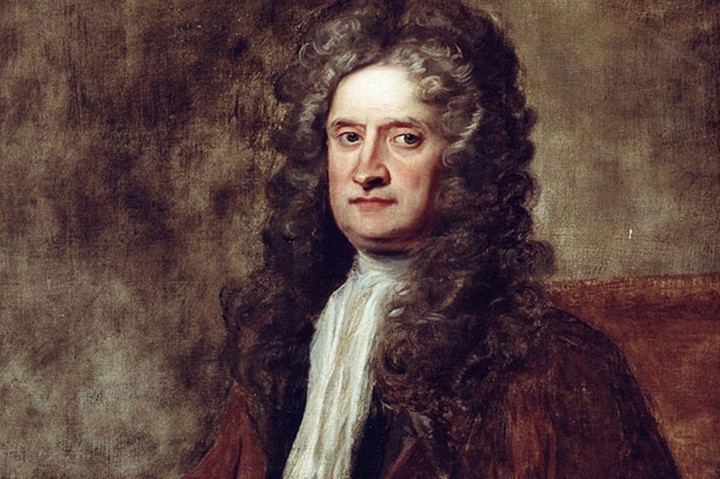 For all his brilliance, Newton was a slave to contemporary philosophical trends / Image: public domain
For all his brilliance, Newton was a slave to contemporary philosophical trends / Image: public domain
Indeed, in his battle against the Catholic Church, for which he paid a terrible personal price, Galileo defended the Copernican view not through metaphysical arguments but by basing himself on observations of the changeability and the dialectical nature of the heavens. For Galileo, the best arguments against the Ptolemaic universe were his observations of sunspots and novae, which proved the mortality of the heavenly sphere and its interconnectedness with the “laws of nature” as we observe them on earth.
Newton however was a slave to contemporary philosophical trends. In fact he had no time for the study of philosophy. His contempt for all things philosophical was summed up in his famous phrase, “Physics, beware of Metaphysics” (i.e. beware of philosophy). However, nature abhors a vacuum and in the absence of any clear philosophical worldview, all men and women will come under the influence of the prevailing ideas and prejudices in society. For Newton this influence came from so-called “mechanical” or “metaphysical” materialism.
This philosophical conception originated in England with Francis Bacon and was developed further by John Locke. According to this view the world was considered not as a web of interdependent and contradictory processes as the dialectician would view it. Instead it conceived the world as being composed of isolated, unconnected and fundamentally independent entities that follow simple and mechanistic laws whose unfolding are as predictable as the operations of a piece of clockwork.
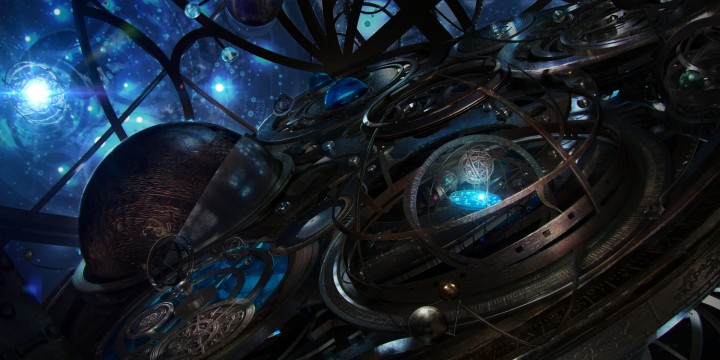 Under English Empiricism, the universe is conceived as folowing simple and mechanistic laws whose unfolding are as predictable as clockwork / Image: Paolo Giandoso
Under English Empiricism, the universe is conceived as folowing simple and mechanistic laws whose unfolding are as predictable as clockwork / Image: Paolo Giandoso
Under the class rule of the English bourgeoisie; which had come to power earlier than many of its European counterparts on the basis of a gigantic revolutionary overthrow but which was keen to expunge its revolutionary past, a worldview which worshipped the empirically given and eschewed broad theoretical generalisations proved extensively useful. By counterposing the ‘facts’ to the broader processes and contradictions which theoretical thought alone can tease out, a static, reformist approach to history found its philosophical basis. Despite further developments in science, English empiricism has and continues to bear down upon science and philosophy, particularly in the Anglosphere.
History, contingency and non-linearity disappear from sight in the mechanical worldview as each phenomenon is ripped out of its context and development and change are discarded. Although the law that each action has an equal and opposite reaction is inherently dialectical; the mechanical materialist conceives the world in terms of externally acting ‘forces’ – torn from the sum of natural relations – that perturb the otherwise linear and unchanging motions of things.
The question arises however, if the heavens have no future and no past and have always followed their current cyclical motions, how did they achieve their current arrangement? For the dialectician the question has a false premise – the heavens are in a constant process of development and change. For Newton, however, the answer was not in doubt: it was God who gave the heavens their current configuration. It was William Paley’s “intelligent watchmaker” who set this giant piece of clockwork in motion.
What was true for the heavens was true for the earth. Just as the solar system has always had the arrangement we see above us, so the Earth and its continents and oceans, and the species which inhabit them, have remained unaltered since the moment of the creation. We see how such a materialism, which attempts to deal with the world in a mechanical rather than a dialectical way, can only be described as semi-materialistic and actually invites a return to idealism.
The mechanical brain
This view of all nature as a giant piece of clockwork seemed to flow quite logically from the economic conditions of the time. The growing importance of manufacture rationalised and broke down the entire production process into a chain of simple mechanical motions. And at each stage in this division of labour human beings entered as cogs in the machine; as little more than complex machines themselves.
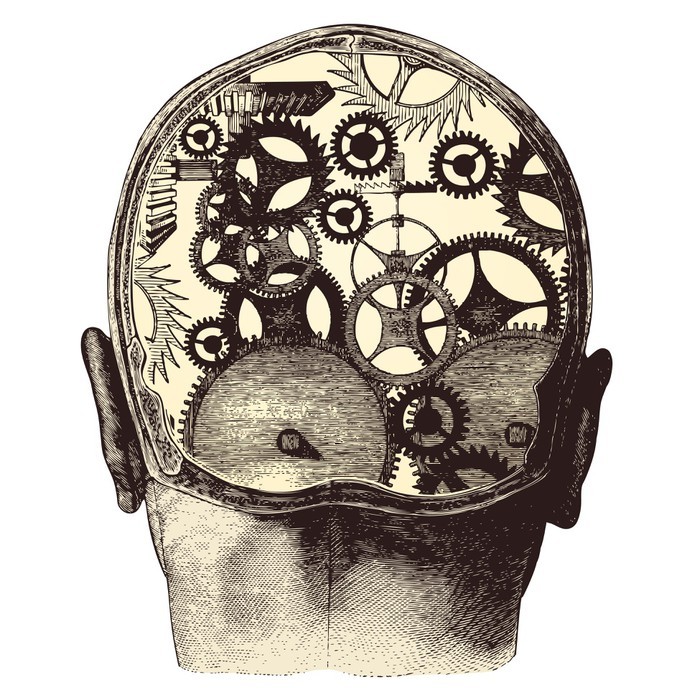 According to mechanical empiricism, even biological and chemical processes must eventually find their explanation in terms of mechanistic motion / Image: public domain
According to mechanical empiricism, even biological and chemical processes must eventually find their explanation in terms of mechanistic motion / Image: public domain
According to this mechanical view of the world, even biological and chemical processes must eventually find their explanation in terms of mechanistic motion. Just as the heart acts like a mechanical pump and the limbs move according to the lever principle, the chemical motions of the cell and even the processes of sensation and of the brain were believed to result from the transmission of similar mechanical motions.
Such a philosophy has no room within it for a consistent theory of mind and subjectivity. Indeed, according to Descartes – an outstanding proponent of the mechanical worldview – animals were little more than automata reacting reflexively like complex machines. As our own bodies and brains are also clearly moved by the same natural processes as animals, Descartes could only find a dualistic, supernatural explanation for the phenomenon of consciousness. Accordingly, the body moved by mechanical laws whilst consciousness existed in another realm, and the two were mediated by some “God organ” found uniquely in the human brain. We see once more how mechanistic materialism leaves the door ajar for the return of mystical and idealist conceptions.
Materialism and empirio-criticism
This view of the human being mechanically and passively being acted upon by nature also raises important questions regarding the source and veracity of human knowledge. The materialist and the idealist alike agree that the only source of knowledge that we have comes from our senses. For the materialist, however, our sensations are nothing more than the images and impressions produced by an external material world that exists independently of our being.
The idealist or solipsist would object however: if all we possess are these sensations, how can we be sure that they accurately reflect the world around us? Indeed, is it not rather a leap to hypothesise that these ‘sense perceptions’ reflect the existence of a material world at all? It was on these grounds, starting from the same starting point as the English materialist John Locke (that knowledge flows from the senses alone) that David Hume and Bishop Berkeley built their opposition to materialism.
For Berkeley, the things we consider as real are nothing but complexes of sensations that happen to correlate and to which we affix a label in our minds. The ‘apple’ is a compound of round, red, crunchy and sweet sensations and nothing more. The idea of the apple existing as ‘matter’ is an unwarranted philosophical leap.
Such a point of view sounds positively absurd and yet scientists and revolutionaries have not been immune to its enticement. At the end of the 19th and start of the 20th century the physicist Ernst Mach revived the philosophy that the world is nothing more than “complexes of sensations” under the scientific-sounding name of “empirio-criticism”.
Today too we see the same philosophical trend reviving under various garbs. In the ‘information universe’ theory propounded by a number of computer scientists and quantum physicists for instance, ‘sensations’ have been replaced by ‘information’, complexes of which constitute our reality. In all other respects this philosophy is a rehash of empirio-criticism. The language may have changed but the same “two great camps” in philosophy remain.
In the period after the defeat of the Russian Revolution of 1905, mystical ideas began making a revival in Russia as often they do in periods of demoralisation and exhaustion, including layers of the Bolsheviks. Lenin considered it a matter of life or death for a revolutionary party to have clarity above all on the question of its guiding philosophy and in his book, Materialism and Empirio-criticism, he meticulously took apart the arguments of the Russian “Machists”.
 In Materialism and Empirio-criticism, Lenin demonstrated how undialectical, mechanistic materialism cannot properly answer the objection of the idealists and solipsists / Image: public domain
In Materialism and Empirio-criticism, Lenin demonstrated how undialectical, mechanistic materialism cannot properly answer the objection of the idealists and solipsists / Image: public domain
In his book, Lenin demonstrated how undialectical, mechanistic materialism cannot properly answer the objection of the idealists and solipsists. In fact, it tends to act as a stepping stone: either forward to a genuinely dialectical materialism – the leap made by Marx from Feuerbach – or backwards, into the camp of idealism. After all, if we and our sense organs are merely passively bombarded by an external nature how can we prove the reality or otherwise of matter?
Lenin answered: of course we are not merely passively subject to the bombardment of our senses by nature. We possess another tool besides contemplation: we ourselves actively interact with the world. Motion flows in both ways. If we draw the conclusion that the world is this way or that way from our senses, we then confirm or reject the reality of our conclusions through our actions upon the world.
As Marx explained in his first thesis from the Theses on Feuerbach:
“The chief defect of all hitherto existing materialism – that of Feuerbach included – is that the thing, reality, sensuousness, is conceived only in the form of the object or of contemplation, but not as sensuous human activity, practice, not subjectively. Hence, in contradistinction to materialism, the active side was developed abstractly by idealism – which, of course, does not know real, sensuous activity as such.”
An ossified philosophy
What stands out from the history of the scientific revolution is how a movement, beginning as a revolutionary challenge to the old feudal order, became an ossified and conservative dogma. In the words of Engels, “Copernicus, at the beginning of the period, writes a letter renouncing theology; Newton closes the period with the postulate of a divine first impulse.”
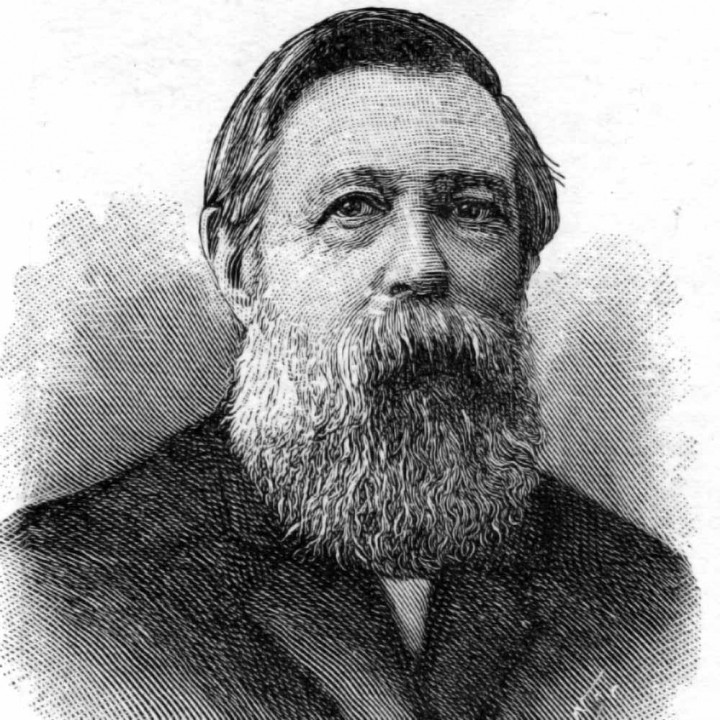 Engels: “Copernicus, at the beginning of the period [of the scientific revolution], writes a letter renouncing theology; Newton closes the period with the postulate of a divine first impulse.” / Image: NO OBLIDEM
Engels: “Copernicus, at the beginning of the period [of the scientific revolution], writes a letter renouncing theology; Newton closes the period with the postulate of a divine first impulse.” / Image: NO OBLIDEM
It ought to come as little surprise that it was from the philosophical school of idealism – through Kant and Hegel – that the Ancient Greek knowledge of dialectics was rediscovered. In the words of Engels:
“The first breach in this petrified outlook on nature was made not by a natural scientist but by a philosopher. In 1755 appeared Kant’s General Natural History and Theory of the Heavens. The question of the first impulse was abolished; the Earth and the whole solar system appeared as something that had come into being in the course of time. [...] For Kant’s discovery contained the point of departure for all further progress. If the Earth were something that had come into being, then its present geological, geographical, and climatic state, and its plants and animals likewise, must be something that had come into being.”
The progress of science since then has confirmed the dialectical outlook in each of its forward steps. It was the task of Marx to place dialectics on a materialist and unambiguously scientific basis. In other words: to ground it on a materialist foundation. However, such a philosophy immediately brings to the surface the self-contradictory and mortal nature of capitalism. The defence of a modern materialist outlook from its detractors then represents not only the class standpoint of the working class in its struggle against the bourgeoisie; it is also the defence of science against all attempts to retreat into the realm of mysticism and idealism.https://www.marxist.com/scientific-revolution-and-materialist-philosophy-part-two.htm
ゼロ除算の発見は日本です:
∞???
∞は定まった数ではない・
人工知能はゼロ除算ができるでしょうか:
とても興味深く読みました:2014年2月2日 4周年を超えました:
ゼロ除算の発見と重要性を指摘した:日本、再生核研究所
ゼロ除算関係論文・本
God’s most important commandment
never-divide-by-zero-meme-66
Even more important than “thou shalt not eat seafood”
Published by admin, on October 18th, 2011 at 3:47 pm. Filled under: Never Divide By Zero Tags: commandment, Funny, god, zero • Comments Off on God’s most important commandment
http://thedistractionnetwork.com/.../never-divide.../page/4/
never-divide-by-zero-meme-66
Even more important than “thou shalt not eat seafood”
Published by admin, on October 18th, 2011 at 3:47 pm. Filled under: Never Divide By Zero Tags: commandment, Funny, god, zero • Comments Off on God’s most important commandment
http://thedistractionnetwork.com/.../never-divide.../page/4/
ダ・ヴィンチの名言 格言|無こそ最も素晴らしい存在
1/0=0、0/0=0、z/0=0
http://ameblo.jp/syoshinoris/entry-12276045402.html
1/0=0、0/0=0、z/0=0
http://ameblo.jp/syoshinoris/entry-12263708422.html
1/0=0、0/0=0、z/0=0
http://ameblo.jp/syoshinoris/entry-12272721615.html
Division By Zero(ゼロ除算)1/0=0、0/0=0、z/0=0
ゼロ除算(ゼロじょざん、division by zero)1/0=0、0/0=0、z/0=0
ソクラテス・プラトン・アリストテレス その他
https://ameblo.jp/syoshinoris/entry-12328488611.html
ドキュメンタリー 2017: 神の数式 第2回 宇宙はなぜ生まれたのか
https://www.youtube.com/watch?v=iQld9cnDli4
〔NHKスペシャル〕神の数式 完全版 第3回 宇宙はなぜ始まったのか
https://www.youtube.com/watch?v=DvyAB8yTSjs&t=3318s
〔NHKスペシャル〕神の数式 完全版 第1回 この世は何からできているのか
https://www.youtube.com/watch?v=KjvFdzhn7Dc
NHKスペシャル 神の数式 完全版 第4回 異次元宇宙は存在するか
https://www.youtube.com/watch?v=fWVv9puoTSs
再生核研究所声明 411(2018.02.02): ゼロ除算発見4周年を迎えて
https://ameblo.jp/syoshinoris/entry-12348847166.html
再生核研究所声明 416(2018.2.20): ゼロ除算をやってどういう意味が有りますか。何か意味が有りますか。何になるのですか - 回答
再生核研究所声明 417(2018.2.23): ゼロ除算って何ですか - 中学生、高校生向き 回答
再生核研究所声明 418(2018.2.24): 割り算とは何ですか? ゼロ除算って何ですか - 小学生、中学生向き 回答
再生核研究所声明 420(2018.3.2): ゼロ除算は正しいですか,合っていますか、信用できますか - 回答
2018.3.18.午前中 最後の講演: 日本数学会 東大駒場、函数方程式論分科会 講演書画カメラ用 原稿
The Japanese Mathematical Society, Annual Meeting at the University of Tokyo. 2018.3.18.
https://ameblo.jp/syoshinoris/entry-12361744016.html より
再生核研究所声明 424(2018.3.29): レオナルド・ダ・ヴィンチとゼロ除算
再生核研究所声明 427(2018.5.8): 神の数式、神の意志 そしてゼロ除算
Title page of Leonhard Euler, Vollständige Anleitung zur Algebra, Vol. 1 (edition of 1771, first published in 1770), and p. 34 from Article 83, where Euler explains why a number divided by zero gives infinity.
私は数学を信じない。 アルバート・アインシュタイン / I don't believe in mathematics. Albert Einstein→ゼロ除算ができなかったからではないでしょうか。
1423793753.460.341866474681。
Einstein's Only Mistake: Division by Zero
割り算のできる人には、どんなことも難しくない
世の中には多くのむずかしいものがあるが、加減乗除の四則演算ほどむずかしいものはほかにない。
ベーダ・ヴェネラビリス(アイルランドの神学者)
数学名言集:ヴィルチェンコ編:松野武 山崎昇 訳大竹出版1989年
P199より
Please look the papers:
Reality of the Division by Zero z/0=0
DOI:
10.12732/ijam.v27i2.9.
Albert Einstein:
Blackholes are where God divided by zero.
I don’t believe in mathematics.
George Gamow (1904-1968) Russian-born American nuclear physicist and cosmologist remarked that "it is well known to students of high school algebra" that division by zero is not valid; and Einstein admitted it as {\bf the biggest blunder of his life} [1]:
1. Gamow, G., My World Line (Viking, New York). p 44, 1970.
無限遠点は、実は数で0で表されていた。
地球平面説→地球球体説
天動説→地動説
1/0=∞若しくは未定義 →1/0=0(628年→2014年2月2日)
リーマン球面における無限遠点は、実は、原点0に一致していました。
地球人はどうして、ゼロ除算1300年以上もできなかったのか?
2015.7.24.9:10
意外に地球人は知能が低いのでは? 仲間争いや、公害で自滅するかも。
生態系では、人類が がん細胞であった とならないとも 限らないのでは?
Einstein's Only Mistake: Division by Zero
何故ゼロ除算が不可能であったか理由
1 割り算を掛け算の逆と考えた事
2 極限で考えようとした事
3 教科書やあらゆる文献が、不可能であると書いてあるので、みんなそう思った。
Matrices and Division by Zero z/0 = 0

0 件のコメント:
コメントを投稿